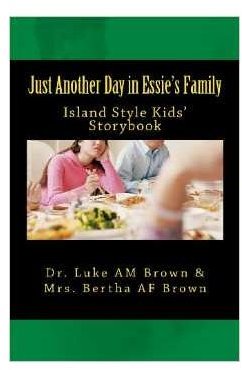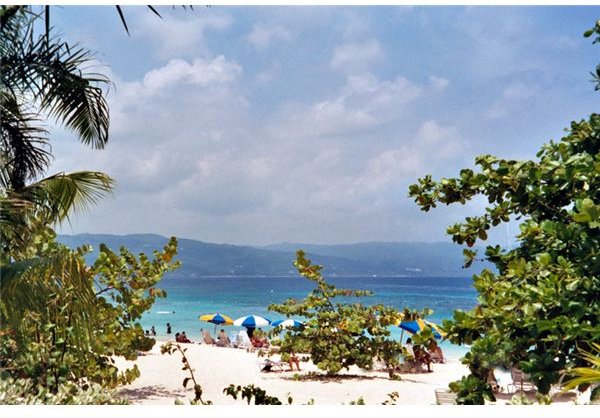Jamaica Unit Study for Homeschool Use: Lesson Plans for Students of All Ages
The Value of a Unit Study
If you’re looking for a fun way to give your children a comprehensive education, this Jamaica unit study for homeschool is a great way to go. By incorporating interesting projects in each subject area, the learning process is made enjoyable. Below you will find a brief history of Jamaica, and creative activities to do during this unit study.
Jamaican History
The island of Jamaica is found in the Caribbean Sea and is 146 miles long and 50 miles wide. This tropical island makes up part of the arc of islands that stretch from Cuba to Trinidad and Tobago.
The first settlers in Jamaica were the Arawaks. These inhabitants for the first seven or eight centuries were driven from their home and enslaved by Spanish invaders around 1510. Due to being overworked and sicknesses brought to the island by the Spanish invaders, the Arawaks were completely destroyed. By 1515, there were so few Arawaks left the Spanish began to import African slaves.
In 1655, the English took over the island, followed by a British takeover, which was made possible by the aid of pirates who were privately being supported by their government. The British government officially received possession when they made a treaty with Spain in 1674.
Sugar and slavery were two main markets of commodity for this island until the slave trade was abolished in 1807. Emancipation for the Jamaican slaves only came after another rebellion in 1838. In 1958, Jamaica joined the West Indies Federation and in 1962, full independence was granted.
With this history as a backdrop, this unit study will help students explore the economy, culture, and traditions that define Jamaica through educational projects and activities. Each subject will have an accompanying activity to help your child dive into learning about this island and its people.
Core Subjects and Activities
Geography:
- Have your child find Jamaica on a map.
- Try requesting a map of the island from a local travel agency or request one online from Visit Jamaica.
- Research the flora and fauna on the island. The references at the end the article are good resources to help you find this information.
- Make a clay impression of the island and the islands around it that form an arc in the Caribbean Sea.
History:
- Have your child research and write a report on the history of Jamaica. Your child could present the paper verbally to your family or ask to speak at an area function, like a 4-H club meeting, or a local tourism bureau.
- Research Christopher Columbus’s exploration of the island in 1451 and 1502. Find out why he was presented with the entire island as a gift by the king and queen of Spain.
- Research the Arawaks’ way of life and the island, and try the art projects give below that relate to the Arawaks.
- Research the history of slavery on the island. J_amaica in Slavery and Freedom: History, Heritage and Freedom_ by Kathleen Monteith and Glen Richards is available on Amazon.com and is an excellent resource.
Math:
-
For older students, explore how much it would cost to go to the University of West Indies, which is found in Kingston, the capital of Jamaica.
-
For younger students, find out how much it costs to buy a sweet potato, pineapple or coconut in a local grocery store, all of which were fruits cultivated by the Arawaks on Jamaica.
-
Research how much it costs to produce and export sugar. See if you can find sugar from Jamaica in a grocery store, and

compare the price to sugar produced in other countries.
English:
- Read Just Another Day in Essie’s Family by Dr. Luke A.M. Brown and Mrs. Berthalicia Fonseca Brown. This is a 70-page story about two days in the life of Essie’s large family in Jamaica. This book can be found at Amazon.com.
- Read This Is Reggae Music: The Story of Jamaica’s Music by Lloyd Bradley to find out about this 40-year old music style, which originated in Jamaica.
Science:
- There are many fantastic resources on Bright Hub to learn about volcanoes. Volcanoes destroyed the capital of Jamaica, Kingston, and are an important part of their history. [14]
- Try this volcano study or do a science experiments about volcanoes.
Incorporating Music, Art and Movement
Music:
- In the 1960s, ska music was invented by Jamaican musicians by combining rhythm and blues (R & B) and mento music. Ten years later reggae music, the most distinctive music from Jamaica, formed out of these musical roots. Bob Marley is a famous reggae musician your child could research.
- Check out reggae music CDs at a local library.
- Research what instruments and rhythms are used to create reggae or ska music.
- Write lyrics for a reggae song.

Art:
- Create an Arawak hut. Cultures of the World: Jamaica by Sean Sheehan has a picture of one that would be easy to reproduce.
- Try to duplicate an Arawak painting that appear on the wall of caves in Jamaica.
- Paint a picture of the Jamaican flag.
Physical Education:
- Cricket was introduced to the Jamaicans in the middle of the 19th century. Research the game of cricket, and then organize a group to play it.
- Plan a day at a beach just like Jamaicans do for their leisuretime.
Extend the Unit Study
After you’ve gone through these subjects for your Jamaica unit study for homeschool, if you’re ready to explore further, you could study the religious culture, economy, government, food and even the festivals of this country. For older students, a fun project could be to plan a mock vacation to Jamaica. Finding out the cost of airfare, hotel fees, and destinations would help your child gain insight into the country even further. Learning about other countries helps children learn to appreciate the similarities and differences of other cultures.
References:
Sheehan, Sean. Cultures Of The World: Jamaica. Times Editions Pte Ltd, 1994.
U.S. Department of State Website, https://www.state.gov/r/pa/ei/bgn/2032.htm
Image: Flag of Jamaica by SKopp under GNU_Free_Documentation_License
Iamge: DoctorsCaveBeach by Ezhiki under GNU Free Documentation License
